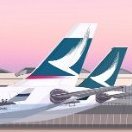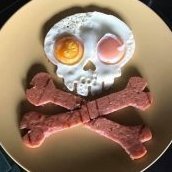Search the Community
Showing results for tags '1/400'.
-
This vessel doesn't need an introduction, but I'll write one anyway: The R.M.S Titanic was a British ocean liner, one of three Olympic-class ships and the largest ship in gross tonnage at the time. During her maiden voyage from Southampton to New York she struck an iceberg at the North Atlantic and sank in just under three hours, resulting in the death of 1,496 of the 2,208 passengers and crew. This was the event that immortalized her name in history. This is Academy's non-premium version of the model, meaning that it only came with the model itself; It didn't have any of the extras that came with the other boxings of the kit such as photoetch or wood decks. Other aftermarket used was Eduard's photoetch set and Master's Olympic-class brass mast set. Other corrections or additions were either scratchbuilt or 3D printed. Here are the photos, before I get into the details of the kit (This is going to be bandwidth-heavy): This is the single longest (8 months) project and largest, most difficult build I've done and it definitely tested my limits as a scale modeller. Being that I usually do aircraft I had to learn multiple skills on the spot to get this model across the finish line. The materials and tools used are fairly straightforward; All of the paints on the model except the white (MRP), anti-fouling red (Mix of (XF-2:2/XF-7:1) and some of the thinner brown parts (light brown marker) were painted with Tamiya acrylics. If I were to revisit this build I'd probably lighten the mix of anti-fouling red and use a much lighter color for the wooden decks and the dark mast color, though. The rigging came from Infini's Super Fine Black Lycra rigging (40 denier), but for the Marconi array that connects the masts I decided to experiment by heating the black PLA filament I use for my 3D printer and pulling it, like stretched sprue. The material behaves like it as well, but is tougher and sags much more consistently than sprue (although more brittle). I used this on the model but the sag disappeared when I attached the lines attaching it to the boat deck and those lycra lines pulled it taut. I would definitely recommend trying it out if you have some PLA to spare at home for rigging that has to droop. As for the quality of the kit, well, of the large scale kits of Titanic the Academy's probably the best one for beginners, but that doesn't say much given that its competitors are a kit released in 1976 and a monster that's twice the size. The way it goes together is relatively straightforward if tedious, but the instructions frequently make it difficult to be sure on anything or to figure out how some parts are supposed to be placed, something that's crucial when there are up to 20 copies of the same ventilator, pipe or crane. The fit isn't great either, especially with the decks and superstructure. It's also highly inconsistent in this regard; sometimes a part will fit just as it's supposed to, and on other times it has to be wrestled in to place. The worst part came when it came to the forward "wall" of the superstructure; This is the part where the bridge windows are located. The gap is inconsistent on each side and I had to use a lot of plastic card shims to get it in place properly, and even then some of the seams are still slightly visible. The inaccuracies on this kit can get annoying as well, so much so that I can't really go into too much detail listing all of them unless I want to make this much longer than it already is. Any builder of the Titanic could uncover many of them through just checking surface-level photos and references and correct accordingly, but I suppose the most important corrections to make are adding a set of missing emergency "cutter" lifeboats (the ones that are opened and hang over the ship), and the lack of C-Deck openings under the forecastle and poop deck. I implemented as many of these as I could but there are some that I had to leave in. For all the inaccuracies, it builds up to a nice looking model in the end, however, and the kit still stands up to what other companies have to offer and is superior to the Revell kit in the same scale. There are many things in the build I know I could have done better in or rushed too much in; but after many months of work I'm just satisfied to call it done for now. Maybe I'll be able to build something closer to the real thing in the future. Thanks for reading!
- 21 replies
-
- 59
-

-

-
Hi all. I received the revell enterprise as a gift from family, in 1/400. If I was to order it myself I would have gone 1/350 which seems way more popular. Now my skills will get me nowhere near the levels seen on here and other sites, that much I accept. But I do want to add some extras, more planes and crew in particular. Search as I may though, I can only find extras for the 1/350 kits. Firstly, why do Revell have to be what seems the only ones doing the cvn65 in this scale? Secondly, if anyone can point me in the right direction for some 1/400 extras please do. As a last resort, is the difference tween 350 and 400 enough to make using 1/400 extras a no-go? Folks any and all input is really welcome.
- 8 replies
-
- 1/400
- Enterprise
-
(and 1 more)
Tagged with:
-
This is a very late refugee from the long-finished What-If III Groupbuild, but only just finished today. The build and very long, but I hope entertaining, backstory thread is HERE It was built from the Heller 1/400 Richelieu kit with Atlantic Models photoetch for the Frog/Novo 1/415 HMS Tiger, plus lots of scrap PE, scrap parts, and scratchbuilding. It depicts the RN Battleship HMS Bellerophon in 1982, just before she led the Falklands task Force as flagship. Hope it meets with Your Whifferness' approval All the best, Al Also if you haven't seen it already, you must check out @ArnoldAmbrose's companion piece, a superb rebuild of Airfix's HMS Tiger as HMS Minotaur in 1/600 here:
-
This is the Heller 1/400 King George V finished as HMS Anson in 1942. It's taken me 4 years on and off to finish. I have cut corners with some of the accuracy, but as a prototype it'll do. It's due to go on a sea base when I get the plinth, so this is it roughly cut and finished. I finished it with a wood deck from Scaledecks.com and WEM enamels. I used the Raven & Roberts colours of AP507A, AP507C, B5 and B6 with MS2 decks and upper surfaces. Finished in a seascape: Just needs a few flags and she's done! Alan EDIT: new pictures added
- 25 replies
-
- 12
-

-
Hi Folk's I have two ships in the stash both given to me by my eldesr from his stash,this and the big queen Mary which only the good Lord knows will ever get built so I thought I would have a second attempt to build this in a GB. Not really many parts and the island assembled,the deck and hull are one piece items so really easily painted and I have no interest in painting the aircraft as they're really a bit poor so I think one session a week till the GB's end should suffice. Popped the deck and island on for a photo she's over two feet long.
-
When waiting for some other parts to turn up for other stuff, I thought I'd start this one.. At first glance the sprues look ok This one is "back-to-back" for some reason Might as well start with the hull. Lots of filler needed here But it's turned out ok I think Next, onto the decking, 1st coat on, so looking patchy. They are all severely warped too I still haven't decided to go for the normal orange/red superstructure or the off-white (5/6 of class orange/red with Sibir being the only one that was off-white). Down side is the name is moulded into the hull, so would have to sand it out and then paint a new one on and my Cyrillic looks like a 2y/o has done it lol
-
*Record scratch noise You may be thinking, "Hold it right there! This guy isn't a modeler of floaty things! That model doesn't look like its plastic! Hell, we're not even sure if he's a real Yank, or even a person!" And you would be mostly right. I don't typically build floaty things, this model is paper (gasp!) - which I also don't typically build. And I'm only a naturalized Yank with Eastern European roots, so paper modeling is in my blood, To date, I've started several dozen paper models, and finished exactly zero. I used to get Maly Modelarz issues from Poland when I was younger, but most were way too complex for me. In the last couple of years, I have dabbled occasionally in paper, but have always hit some kind of snag along the way. I recently found a paper sensei to help guide me along, and I very quickly learned that a lot of my problems were related to using the wrong adhesives and tools. She also helped me choose a kit that was simple, but would also keep my interest in the long term. You see, even the simplest of these kits are all long term projects because you're not only gluing parts together, you're also fashioning the parts to be glued. And so we come to JSC Paper Models' SS Atlantic Conveyor. The vessel was a container ship launched in 1970, and was relinquished to the Royal Navy during the Falklands War, at which point it was converted into an auxiliary aircraft carrier for harriers and helicopters. It was hit by two Exocet missiles and sank while being towed back to the UK. The JSC kit is a waterline model in 1/400 scale, and includes parts to build the Conveyor in either civilian or military configuration. It also comes with a squadron of harriers, and helicopters, as well as a nice model of the HMS Sheffield. I have a soft spot for merchant and work ships, so I chose to build the civilian version. I also don't find the prospect of folding and rolling itsie-bitsie pieces for a dozen 1/400 scale aircraft the least bit appealing, but that's neither here nor there. But here is the digest version of work from the last week or two. First, the skellington. JSC kits are a bit unique in that most don't have frame parts that need to be backed by heavy card stock to make the skeleton. Instead, they rely on geodetic shapes and the power of physics to give the structure rigidity. Here we are laying down the"keel". Well, it isn't really a keel, since this is a waterline model, but I wanted to sound all maritime right there as you can see, even at 1/400 scale, this model is going to be pretty large. Fast forward a few nights, and we have the nearly completed hull frame. And it looks like its been out drinking.... I was pretty concerned at this point, but was reassured that it was part of the kit design. Also note the "Shoo Gloo" I'm using. Turns out solvent based adhesives work much better on paper models than PVA. Water from the PVA soaks the paper and causes it to become really wavy. This is what ruined all of my previous attempts at paper modeling. Where was I? Oh yeah, the floppy frames are part of the kit design. The kit comes with two decks. The military and civilian versions. The design calls for you to use both, you just choose which one is the under-decking, and which goes on top, depending on the version you build. The underdecking stiffens the frame pretty nicely. Not perfectly, but some of that might be user error. A bit of rolling hills up there. but overall better than all of my previous efforts. Here is the front half of the second deck layer, just dry-fit for now. Evidently, if I do this right, it should come out looking straight. Stay tuned for more, as I learn more. Oh, and if you're interested in seeing the other cool stuff JSC has to offer - here is a link to their well stocked webshop. And Poland's post-office IS shipping out of country once again, so order with confidence. http://sklep.jsc.pl/index.php/
- 13 replies
-
- 18
-

-

-
Rejoining the Navy with this Airfix U-Boat - my first ever submarine. Colour scheme. And the parts. Don't remember the purchase details, but I always intended to set this model into a seascape . . . . . . a photoprop - to be attacked by every Allied sub-hunter in my collection. Kit length 166mm, width 14mm, this is small!
-
Giddey to all fellow ship modelers! Long before the 1/350 scale models appeared, my favourite scale was 1/400 - and I must admit still is. Here are the Heller Z31 destroyer kits build as Z32 and Z37. As you can see the Heller 1/400 ship models are still nice little kits, and with some aftermarket PE Sets still up to date. The only point I would do better are the chunky masts. Here are the pics, all comments welcome! Hope you like it! Cheers Andreas
-
Here some pic`s of my KM Scharnhorst 1/400 scale build 16 years ago. All comments welcome as usual, especially if you can suggest something I can do better! Some missing details scratchbuild added, and the rear turret C corrected. The c turret correction I noticed this flaw too late, and after a few days headache I found a solution: Cut out a square piece of the deck and then put it back in place rotated by 180 degrees it worked quite well, almost invisible! Hope you like it! Cheers Andreas
-
Giddey This Heller kit is the best tanker/oiler model ever produced. I bought it at ebay 15 years ago for 100€! It is sold now as package with a aircraft carrier and an escort vessel. i bought this one too - to build the civil version. regards Andreas
- 12 replies
-
- 34
-

-

-
Hi folk's,my second(and final) build for this GB is Heller's big but quite basic carrier Foch.Launched in July 1960 and commissioned three years later she served with the French navy for over thirty five years before being sold to Brazil and re-named Sao Paulo in 2000.The kit is basic with not that many parts so OOB is the order of the day the kit was given to me by my eldest from the wardrobe of doom as part of a set which contained supply ship and destroyer so as a change from far too many aircraft and as the kit has decal's for Foch included I thought it would make a nice change.She has a complement of Etendard,Crusader and Alize aircraft all quite nicely molded pity Heller didn't include decals for them and I don't fancy painting them! Here's the box contents.
-
Hi Gang, this is the Tirpitz. I have had this one 'nearly' finished for the past 18 months, as with my previous warship model the 'King George V 'I scratch built the hand rails using stretched sprue. Probably not to the correct scale but I think they add something to the finished model, unfortunately before I had made the hand rails around the main deck I received a aircraft model. As Military aircraft of all eras are my first love this one may be waiting a while. So whilst its still presentable and in one piece I will present it for your scrutiny. As always all comments and criticisms are welcome. Thanks for looking.
-
Since my return to the hobby 3 or 4 years ago I've focussed solely on fleet airm aircraft, but building an Australian light fleet carrier has always been lurking in the back of my mind. Wandering around the hobby shop yesterday looking for a tube of putty, I spotted a Heller 1/400 Colossus / Arromanches for a nice price and it didn't take long for me to reason I needed a break from aircraft. Now in the cold hard light of another day I'm starting to realise how much out of my depth I now feel. Lucky I've got Britmodeller for inspiration and some helpful assistance! I've settled on HMAS Vengeance, one of the 16 light fleet carriers laid down in Britian during WW2. Originally commissioned as HMS Vengeance, she was loaned to the Royal Australian Navy between 1953 - 1955 whilst the RAN awaited the delivery of the Majestic class carrier HMAS Melbourne. She was then sold to the Brazillian Navy where she served as the Minas Gerais until 2001! I'll be depicting Vengeance on her return voyage to England in June/August 1955. This was my father's first sea-going appointment in the RAN. I've so far found quite a few good quality photos of Vengeance herself and assorted plans for other Collosus carriers - the Arromanches and Karel Doorman - which should have broadly similar internals. I've also noted Martin's excellent build of the latter in these forums. The White Ensign etch set is on order and 1/400 Fairey Firefly, Sea Fury and Bristol Sycamore aircraft are available From Shapeways as 3-D prints. A few questions if I may before I get underway: . I want to drill out the scuttles (portholes), but note from photos that not every one is "open". Are the "closed" ones blanked off with metal plates according to the internal layout or should they all open? The Heller depiction of these appears to be a little loose when compared to photos. . Can anyone comment definitively on what armament was carried in 1955? The RAN web site quotes 12x40mm and 32x20mm anti aircraft guns. However photos I've seen from her arrival in Australian waters and the kit itself show 5 quadruple 40mm Pom Poms and around 20 single 20mm oerlikons. Perhaps this changed over time with re-fits. . Although jumping ahead a bit, what would be suitable colours for hull/infrastructure and the deck? So far I've turned up AS2700 N42 Storm Grey for the former and N63 Pewter (or NATO dark sea grey) for the deck but these were I believe in relation to more recent RAN ships. Thanks for reading this far. Hope to have some progress up within a few weeks. Andrew
- 13 replies
-
- 1/400
- Royal Australian Navy
-
(and 1 more)
Tagged with:
-
THE LEGEND! The Royal Navy's Admiralty watched with interest in 1968 as the US Navy reactivated the battleship New Jersey for active service in Vietnam. Mindful of the overwhelming success of this venture, Admiral Sir Roger Bong ordered an inquiry into the possibility of acquiring a refitted battleship for commissioning into the RN. The proposal was advanced after the new government under Prime Minister Ted Coke took office in 1971. Initial approaches to the US Navy regarding its mothballed Iowa-class were flatly turned down by CNO Adm Arleigh Smackhead, so attention shifted towards France, which maintained the only other seaworthy battleship, the Richelieu, preserved in mothballs and needing funding to be retained as a museum ship. President François Nymphomane was quite receptive to the Royal Navy taking the costly ship from his budget-strapped hands, and was pleased to sell the ship to Britain in 1972 for just 20,000 Francs (about fifty quid) in return for Mary Millington's phone number. The Richelieu was towed to HM Dockyard Devonport for refit and updating to modern naval standards. The main 15-in and secondary 6-in armament was retained, but all anti-aircraft guns and other extraneous equipment was removed to save weight. Modern radar and communications equipment was installed, and further weight savings obtained by removal of the French officers' WAGs and floozies' quarters, though this was somewhat offset by the need to install toilets and sanitation throughout the ship. Sea Cat anti-aircraft missiles were fitted for air defence, and helicopter handling facilities were added for two Sea King helicopters. The ship was renamed HMS Bellerophon, due to its ship-of-the-line heritage, but mostly to save money because the nameplates had already been cast for the subsequently renamed Tiger-class cruiser, HMS Blake. Bellerophon was commissioned in 1977, in time for her first public appearance at HM the Queen's Jubilee Spithead Review. She completely stole the show, particularly when a main armament salute blew the wig off the head of then-US President Jerry Lewis' wife, Anita Ekberg. The ship spent the next three years on goodwill visits to South Africa, the Caribbean and the Far East. She was a firm favourite with the Royal Family, and carried various members on flag-waving visits around the world. An extensive refit in 1981 saw her fitted with upgraded electronics, Exocet anti-ship missiles, new Lynx HAS.2 helicopters, and anti-missile countermeasures. When news reached Britain of an Argentine invasion of the remote Falkland Islands, Prime Minister Margaret Fatuous ordered the Defence Staff to organise a Task Force to retake the islands. Bellerophon set sail on 5 April 1982 as the flagship of Task Force commander R-Adm Sandy Butt. Upon reaching the war zone on 1st May she immediately began to make a nuisance of herself. She used her 6-in guns to harass enemy positions throughout the entire theatre, but her finest hour came just four days after arriving. On receiving a position report from the submarine HMS Conqueror, Admiral Butt despatched his flagship with the AA destroyers Sheffield and Glamorgan at flank speed of 30kt. They disabled the Argentine cruiser Belgrano with Exocet missiles before arriving within gun range at dawn on 5 May. Bellerophon proceeded to sink the armoured cruiser with her 15-in gunfire in less than 20 mins. The ship's luck would change just a day later. Now the prime target of Argentine air attacks, Bellerophon withdrew to the northeast of the Falklands to provide radar picket duty for the fleet. Despite her cordon of destroyers, Bellerophon was attacked by Argentine Navy Super Etendard aircraft with four Exocet missiles, two of which made full-detonation impacts amidships. Being a well-armoured battleship, the missiles had no more effect on the operational status of the ship than a couple of flashbangs. Several cups of tea were spilt, and the noise of the impacts woke some of the helicopter pilots who were asleep in their quarters as usual. The damage to Bellerophon was painted over before teatime. Bellerophon provided effective naval gunfire support throughout the landings and land campaign, and also shelled every Argentine installation and aircraft at Stanley airport, rendering any risky, long-range aircraft missions superfluous. (The RAF performed them anyway, so as not to lose face, and still missed). The final testimony to the battleship's effectiveness came from Lieutenant Chumpy Spliffs, 45 Cdo RM, on Two Sisters ridge: Bellerophon returned to Plymouth at the head of a victorious Task Force on 21 July to a rapturous welcome after over 100 days at sea. She was last battleship to sink an enemy unit at sea. As a token of thanks from a grateful nation, Bellerophon's last refit was cancelled and she was laid up and eventually scrapped in 1984. Her ship's bell is preserved in some Whitehall club, presumably to remind fat civil servants when it's time to hit the trough. ========================================================================================================== THE FACTS! ......Well if you've lasted this long, you deserve to know that this is the Heller 1/400 Richelieu kit, with some Atlantic Models PE to go on it. Some scratchbuilding will definitely be necessary to fit aircraft hangars and so on. The ship is mythically portrayed at its peak in 1982 just before sailing for the Falklands. *Note: This quote is based on fact. I adapted it for my "legend" from a genuine quote by a USMC lieutenant describing receiving naval gunfire support from the USS New Jersey in Vietnam, 1968. Al
- 39 replies
-
- 22
-

-

-
Here are some photos of my collection of U-class submarines. I really like these small submarines and i'm keen to build more. Not 100% on colours but i haven't found much in the way of reference material. I'm building more and more world war 2 subs now, although Id prefer to build the British designs. Alex
-
-
Hello All, My first ship in a lo-o-ong time. It's the Airfix Mary Rose, picked up for silly cheap in an Airfix sale to take my paints order over the free shipping threshold. The kit and its decals are really nice, in sharp contrast to the nigh-on 60 year old moulds in the rest of this series. It looked too toy-like without any rigging, so I did some basic rigging, much simplified! The rigging is brown sewing thread de-fuzzed by running it through PVA glue and squeezing out the excess between my fingers. I constructed the ladders by winding thread around a notched rectangular frame made from one of the sprues, gluing the thread together with brushed-on dilute PVA and then cutting the ladders out with scissors when everything was dry. I am successfully resisting the urge to find out what the real rigging was like, so this can stay on the finished pile! Thanks for looking, Adrian
- 12 replies
-
- 18
-

-
R81 ROYAL NETHERLANDS NAVY AIRCRAFT CARRIER HR.MS. KAREL DOORMAN Short History: Type: Light Fleet Carrier. Admiralty Job Number J3697 / Yard Number 1126 She was laid down on 3 December 1942, by the yard Cammel Laird & Co Ltd. Birkenhead. Completed: 17 January 1945 Service Record: HMS Venerable Royal Navy 17 May 1945 - 28 May 1948 March 1945-March 1947: British Pacific Fleet (BPF). Liberation of Hong Kong, repatriating thousands of former prisoners, soldiers and equipment, between Fremantle, Bombay, Batavia and Singapore. In 1948 sold to the Dutch Government. ----- Hr.Ms. Karel Doorman Royal Netherlands Navy 28 May 1948 - 8 October 1968 1955-1958 extensive modernization, at Wilton-Feijenoord Shipyard in Holland. During this time she was fitted with a new steam catapult, an angled deck, and mirror landing sight, new island, massive mast and funnel, also ultra modern radar equipment, air search, height search, target acquisition, navigation and carrier controlled approach radar systems. These were all delivered by the famous electronic company Holland Signaal. (Now Thales) General information after major refit: Length: 214 meter. – Width: 34.80 meter. – Draft: 7.30 meter. – Displacement: 13800 ton. Two engine rooms, producing 40.000 HP- 2 screws – 1 rudder, – Max.speed 24.5 knots Armament: 10x 40 mm Bofors AA. – Crew: 1500 including air group. Air Group 1958-1962 Grumman Avengers, Hawker Siddely Sea Hawk-Sikorsky HO4-S3 (S55) Air Groups 1962-1968 Grumman S-2A Tracker- Sikorsky HSS-1N SeaBat. With only anti-submarine Trackers and Helicopters, the carrier became a Carrier Vessel Submarines (CVS). The carrier took part in many NATO exercises and was mainly operational in the Atlantic, Mediterranean and the Caribbean waters. One exception was a “Show the Flag“world deployment in 1960, lasting 7 months. During this trip the carrier transported next to its own air group also 12 Hawker Hunters (partly dismantled in the hangar) to the former Netherlands New Guinea, to boost the Dutch defences against the Indonesian so called Confrontation Politics. In 1968, she was severely damaged by a major fire in the engine room and subsequently sold to Argentina. “ARA 25 de Mayo” In service: 1 September 1969. A refit took place at the Wilton Feijenoord Shipyard. On her maiden trip to Argentina, the ship had her first encounter with the prototype of the British Sea Harrier, landing on her deck for a possible (ordering) interest from the Argentine Navy Officials. During the Falkland War (1982) the carrier was flagship of Carrier Task Force (CTF 79 /01-03 may 1982) and was indeed ordered by the Naval High Command to attack the British carrier battle group, after the precise location was detected by Grumman Trackers, operating from the carrier. Due to the fact, that a night strike was not possible by the A-4Q Skyhawk, and knowing to be detected, the British battle group moved to the east and out of range from the Argentines. In the year 2000, she was towed to Alang (India) to be broken up for scrap. The model, scale 1/400 Combination of Heller (Arromanches) plastic kit, enhanced with a resin set, etch set and decal set by www.Naval Models.com. These extensive sets make it possible to construct the carrier after the major refit. (Angled deck, new island, and new radar suite.) Construction: This multimedia kit needs a lot of TLC, especially connecting the resin to the plastic over large areas. A large etch set with radars, main mast, propellers, rotor blades, tail rotors, everything is included. Basically, the same items that were used during the real major refit Length in centimeter 56 / Width in centimeters 8+. The model is built full hull and placed in a wooden casing. This casing is then filled with molding powder and left alone for shrinking. After the water is dampened out of the powder, the difference (3mm) is then filled with liquitex gel and sculptured with a little spoon. This gel hardens out after 24 hours. Then it is studying the water pictures, to make the final choice on the colors. Hr.Ms. Karel Doorman entering Toulon harbor, 03 november 1967 The Diorama dated 03 November 1967: In October 1967, the Dutch Navy concentrated a Task Force that included eleven ships, including the carrier (flagship), destroyers, frigates, submarines, tanker and Fleet Air Arm assets for naval operations on the High Atlantic and the Mediterranean. The entry of the carrier into Toulon anchorage was the idea for the diorama (See text and pictures) www.vlaggeschipsmaldeel5.nl/html/2e_najaarsreis_1967 By arrival, two French Naval Tugboats are assisting the carrier to its anchorage. The carriers’ air group, consisting out of Squadron 4 and 8, are in full force (show the flag) ranged on the deck. Starboard and Port anchor are both “presented” and ready to fall in case of emergency or during the coming anchoring procedure. Lockheed Neptune (SP-2H/214) from Squadron 320 is making a low fly-past over the rear deck of the carrier. (Aircraft connected inside the plexiglas dustcover.) Hr.Ms. Karel Doorman entering the harbor of Toulon, 3 November 1967. The complete air group 12x Trackers and 8x HSS-1N are ranged on deck. Assisted by the French naval tugs Robuste and Hercules. The complete flight deck, including the island with flight control station, navigation and admiral bridge. Main mast with clearly visible in the top of the mast, the white TACAN (Tactical Airborne Navigation), target aquisition scanner, the large air warning scanners, the front height indicator radar from the Holland Signaal electronic company. Starboard and Port anchors are "Presented" ready for use in case of emergency or by the anchoring procedure. The naval tug "Hercules" is in the process of hauling in the towline from the carrier. The naval tug "Robuste" in position on the port side. Points of interest: The oil rig, salute battery, HSS-1N with folded tail and rotor blades, batsman position on the flight deck, including escape netting, and the stowed accomodation ladder under the the salute battery position. Clearly visible also the white life-rafts. Points of interest: Batsman position, salute battery platforms, oil rig, 2x HSS-1N Sikorsky ready for take off if necessary. On both sides of the elavator 2x HSS-1N with folded tail and rotor blades. The arrester wires 5 and 6 are repositioned, so that the elavator can be used in harbor. Points of interest: Flight control tower, carrier controlled approach radar (CCA), deck tractors, the port and starboard deck landing mirror sight,, the AA Bofors, deck winches on back side of the island for the handling of the derrick. Tracker "160" is lashed to the catapult. Notice full national markings and navigation lights including tail beacons on aircraft. Close up of the fast Blue and Red motorboats, the crash tender, deck landing mirror sight and the Trackers and HSS-1N Sikorsky's. Also the outrigger under the Blue motorboat in stowed position. Points of interest: The "Blue and Red" fast motorboats. The crash tender and the HF-MF communication antennas, connected in between the two mast. Under the AA gunplatform is the stowed accomodation ladder. On the side of the island can be seen the stowed derrick. This was used in harbor, or during transferring, or receiving oil. The winches to handle the derrick can be seen directly behind the island structure. Points of interest: The two grey height indicator radars for 360% coverage. In connection with the radar scan from the large black air warnings radars the operators know exactly height and position of incoming targets. Flag indicators: Command flag 1 star (Commodore on board) French flag (Visiting Toulon) Pilot on board and a speed indicator for other shipping in the area. All radars are in the "zero" position and turned off. Living near the WF dockyard at the time, each sweep of the big scanners in harbor would interfere with your personnel radio receiver at home. (1960's) Only the sea navigation radar is rotating. This is positioned between the front height scanner and the ADF equipment. Before heading to the French Naval Air Base Hyeres, Lockheed Neptune SP-2H "214" makes a low fly-past over the carrier. The SP-2H Long Range Maritime Patrol Aircraft (LRMPA)Lockheed Neptune from the Royal Netherlands Navy Air Arm (MLD). Kit and Accessories: The complete kit is from Naval Models, http://www.navalmodels.com/producten/koninklijke_marine_1_400/ Grumman Trackers are from Larsenal (www.larsenal.com) French naval harbor tugs (Acharné Class) from Larsenal Winches, watertight doors, firefighting reels, from Larsenal Crew is from North Star, via Larsenal Lockheed Neptune is from Larsenal Railing is from Tauro (www.tauro.com) Scratch built. Books: British Aircraft Carriers by David Hobbs The Colossus-Class Aircraft carriers 1944-1972 by Neil Mccart Wings of the Malvinas by Santiago Rivas Hr.Ms. Karel Doorman by Bert Brand Verguisd en geprezen by LTZ1 Willem Geneste. Op de grens van zee en lucht (Lockheed Neptune F.C. Van Oosten) Website: www.vlaggeschipsmaldeel5.nl (Webmaster Steven Visser) Paints and airbrush: Revell, Xtra Color, Humbrol, Revell Master Class airbrush. Water: Molding powder, Liquitex Medium Gloss Gel, water paints for the color. Enjoy. Regards, Dirk.
- 18 replies
-
- 23
-

-
Hi Everyone, and a Happy New Year! This is a really quick build as i build up to starting a big 1/72 U-Boat in the next month or so. It's a Mirage Hobby 1/400 Type IXC U-Boat, done as U-176 from the box with some railings borrowed from an old WEM 1/400 set. Not exactly dramatic, but goes together really nicely for such a small kit. Decided to do it as a display model with no weathering. Doesn't take up much shelf space either! I'm treating it as a little hors d'oeuvre - the Revell 1/144 scale Type VIIC I'm finishing off is part two, followed by something a lot bigger as the main dish! Cheers, Al
- 2 replies
-
- 3
-

-
- 1/400
- Mirage Hobby
-
(and 1 more)
Tagged with:













